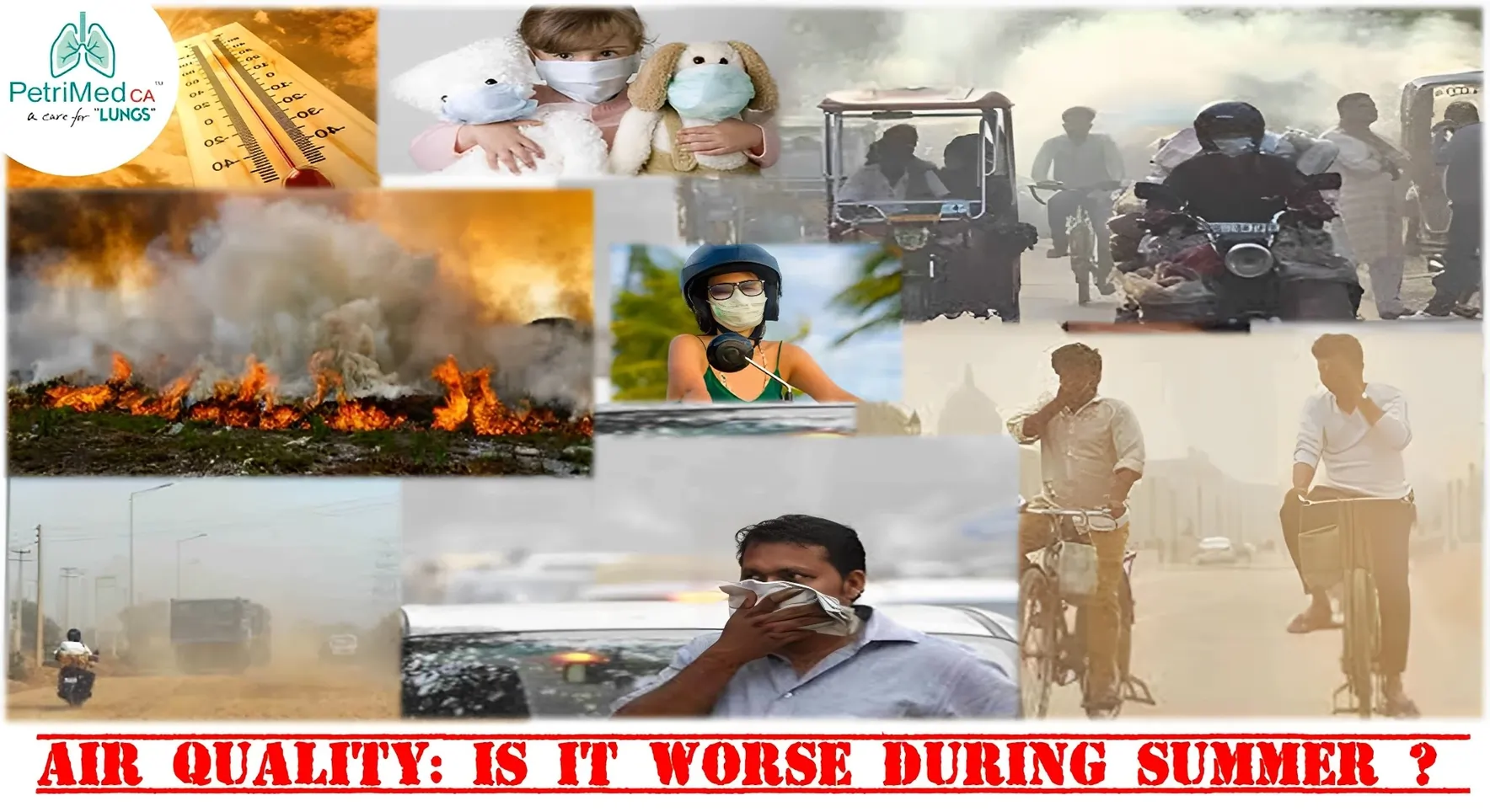Summer Air Quality And Your Health
28 Apr 2023
As activities move outdoors for summer, there are several factors the public should protect themselves from, including sunstroke, dehydration, allergies, and insects. One of the most important things to consider, especially is Air Pollution.
Each year, high temperature waves around the world result in deaths and increased hospital admissions due to cardiovascular and respiratory illnesses, heat-related stress such as heat stroke, and other health problems linked to elevated heat levels.
Dangerous levels of air pollution were observed around the world during the recent period of high temperatures. One contributing factor to this phenomenon is that heat acts as a catalyst, transforming existing components in the air into hazardous by-products like ozone.
As temperatures increase, so does the level of air pollution:
Certain types of pollution, including ground-level ozone, can be produced more effectively during sunny and hot weather. The chemical reactions that result in the formation of harmful ozone in our atmosphere rely on the presence of sunlight.
As a result, during the summer months and particularly in times of extreme heat, cities and nearby rural regions may experience hazardous levels of ozone pollution.
While in a country like India – proximity to the beach and mountains as well as the weather – these things may also impact the level of air pollution we get exposed to.
Ozone is a substance that can cause irritation to the lungs. Inhaling ground-level ozone can have both immediate and long-lasting impacts on your health. Individuals who are most susceptible to the harmful effects include children, older adults, people with asthma or other lung conditions, as well as those who work or engage in outdoor physical activities.
“There are two major air pollutants:
• Particulate matter, which are small hazardous particles ranging in size (from PM 2.5 to PM 10) made up of acids, organic and inorganic chemicals, metals and soils or dust particles.
• Ozone, which occurs when volatile organic compounds (VOCs) react when nitrogen oxidizes in the air under sunlight.
The other air pollutant categories are carbon monoxide, lead, sulphur dioxide and nitrogen dioxide. “There are also hundreds of air toxins made up of different compounds, in very small amounts that do not normally get monitored and regulated.
Smog intensity can also increase due to something called an inversion. An inversion occurs when a layer of cool air becomes trapped near the surface or ground by a layer of warm air above the surface. When the air is unable to rise, pollutants remain near the surface, accumulating concentration.
In the countries near oceans, the layer of air close to the surface is cooled by cold ocean air during the day or by the ground at night. The layer above it is warmer and thus, acts like a trap, which keeps pollutants such as traffic emissions and smoke from wildfires close to the surface.
What people must look out for in the summer, is engaging in strenuous outdoor activities in areas with high air pollutant concentrations either due to local emissions or upwind emissions of pollutions.
Up winds are when pollution is emitted in one area and blown into another area due to wind. Going for a jog in the early afternoon may be the best time to avoid traffic emissions from rush hours.
For people with medical vulnerabilities such as allergies, asthma, pregnancy or for people at an older age, it is important to avoid outdoor activities during high air pollution days or in high pollution areas. It is smart to check the Air Quality Index however there are challenges because there are not neighbourhood – level data.
Those participating in outdoor activities should remember:
• Avoid activity during traffic hours in the morning or late afternoon since emissions are usually higher during those periods.
• Do yard work and other outdoor chores early in the morning or later in the evening, when the sun is not as strong and there is less humidity.
• If you cannot avoid working outside during these peak times, do your best not to overdo it.
• “It is not easy to control outdoor air quality, though, one can improve the air quality inside his/her house, office, institution and similar indoor places with the help of an air purification system.”
The Takeaway:
According to a recent statistical model, summer heat waves are projected to become more frequent until 2050, leading to an increase in unhealthy ozone levels particularly in the southwest, Asian, and northeast regions.
To curb the negative impacts of poor air quality caused by heatwaves and high levels of ozone, reducing the levels of its two primary polluting components like nitrogen oxides and volatile organic compounds in the atmosphere, is crucial. Limiting or eliminating the sources of these pollutants, especially through high-end air treatment solutions, is one way to achieve this.
On an individual level, you can contribute to this effort by advocating for stricter air quality regulations by using PetriMed CA air purification system, which engineered to provide a clean and healthy indoor environment. It features a medical-grade HEPA H14 in combination with pre-filter, pre-activated carbon filter, UVC, and ionization to capture 99.999% of air pollutants.
